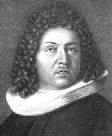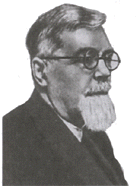
Zhilin P.A. Nonlinear Theory of Thin Rods // Lecture at XXXIII Summer School - Conference “Advanced Problems in Mechanics”, St. Petersburg, Russia, 2005.
 |
| J.Bernoulli |
Birth of the ordinary differential equations. In 1691 Jacob Bernoulli has derived the differential equation of equilibrium of a rope (string)
Birth of the equations in partial derivatives. In 1742 Jacque D'Alembert has derived the equation of vibrations of a string
 |
| L.Euler |

Birth of the theory of bifurcation of the solutions of nonlinear differential equations. In 1744 L. Euler has solved a problem on a longitudinal bending of the rod, named later Euler's Elastica, and found the beginning of the theory of bifurcations and the theory of the eigenvalues of nonlinear operators.
Birth of a new mechanics and the proof of incompleteness of the Newton mechanics. In 1771 L. Euler has derived a general equations of equilibrium of rods
To derive the equations (3) it was required to Euler about 50 years of reflections. As a result Euler has made one of the greatest opening in mechanics and physics, which to the full extent is not realized by the majority of mechanics and physicists up to present time. Namely, Euler has realized the necessity of the introduction of moments as independent objects, which can not be in terms of the moment of force. That means, firstly, necessity of the introductions of the new fundamental law of physics, expressed by the second equation (3) and, secondly, the fundamental incompleteness of the Newton Mechanics. Though L. Euler has made the determining step for introduction of the moments, independent of forces, but the general definition of the moment has been given rather recently by P.A. Zhilin.
 |
| E.L.Nikolai |
Birth of the symmetry theory in multi-oriented spaces. In 1977 P.A. Zhilin at construction of the constitutive equations in the theory of rods and shells has found out, that the application of the classical theory of symmetry leads to the absurd results. The analysis has shown, that the reason of the impasse is that fact, that the theory of rods and shells contain tensor's objects that is defined in spaces with two independent orientations. Therefore in such space there exist the tensors of four various types. The classical theory of symmetry is applicable only to the so-called polar tensors, i.e. to objects, independent of a choice of orientations in space. Thus it was necessary to develop the generalized theory of symmetry, which is valid for tensors of any types. Let us note that without this generalized theory of symmetry the correct construction of a general theory of rods and shells is impossible.
Above only those facts have been marked which have affected and continue to influence on the theoretical foundations of modern mechanics and mathematical physics. In the report there is no need to speak about enormous value of the rod theory for decision of actual problems of technics. Unfortunately, frameworks of the report do not allow to tell about remarkable achievements of many researchers at the decision of the very much interesting specific problems.
Unsolved questions of the rod theory. In the rod theory it is obtained a lot of surprising and even paradoxical results which demand clear explanations. Spatial forms of the rod motions are not almost investigated. Within the framework of the existing theory of rods it is very difficult to investigate the important problems for related dynamics of rods and, for example, rigid bodies as these two two important objects of mechanics are stated on various and incompatible languages. The main obstacle in a way of overcoming of all these difficulties is absence a general nonlinear theory of rods stated in language convenient for applications. The first presentation of such theory is one of the purposes of the report. Another, not less important, the purpose of the report is the discussion, from positions of the submitted theory, of some classical problems of the rod theory and revealing in them of the new circumstances latent in existing decisions. In particular, the new interpretation of the Nikolai paradox based on the full analysis of the Euler elastica will be given in the report. The author has solutions of a several new problems, but, unfortunately, is forced to leave them behind frameworks of the report.